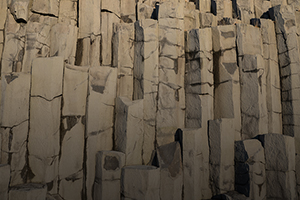Storing Carbon in Rock

A pilot project is currently underway at a geothermal power plant in Iceland to capture carbon emissions and turn them into rock. The method could provide a stable means of storing carbon from greenhouse gases as part of a global effort to stem climate change.
Known as CarbFix, the process basically takes carbon dioxide (CO2) that has been dissolved in water and injects it under high pressure into basalt rock up to 1,000 meters below the surface. The basalt, which is formed from cooled lava, contains small cavities that fill with water. As the gas comes into contact with minerals in the rock (mainly calcium, magnesium, and iron), a chemical reaction occurs causing the CO2 to mineralize. Once it’s turned to rock, the only thing likely to release it is a volcanic eruption.
Although the method essentially mimics what is happening in nature, CarbFix speeds up the process dramatically. One drawback, however, is that it requires large amounts of desalinated water – around 25 tons for each ton of CO2. While this is not an issue at the Iceland installation, researchers are already looking at ways to adapt the process for saltwater so that it may be used in areas where fresh water is not as abundant. Work is also underway to develop a means of capturing the CO2 directly from the atmosphere.
For information: CarbFix; Web site: https://www.carbfix.com/ Reykjavik Energy, Baejarhals 1, 110 Reykjavik, Iceland; Web site: https://www.or.is/